Fascination in young footballers has never been higher, especially in youngsters playing at the highest stages, taking part in the biggest matches across Europe and representing the biggest clubs. When thinking about young talents that have played at such a high level so early in their career, the likes of Phil Foden, a Manchester City academy graduate, immediately come to mind. Also within this mould are Jadon Sancho in the Bundesliga and Bukayo Saka, both players with an abundance of experience despite only being in their early 20s. While these types are easy on the eye and capture our attention, it is important to acknowledge players that climb the ladder and have a more vigorous path to the top of the footballing ladder.
In the summer of 2021, Bryan Gil made his big-money move to the Premier League from Sevilla to Tottenham Hotspur. While he was a Sevilla academy graduate, his playing time was limited, which needed him to be a blessing in disguise. During the 20/21 La Liga season, Gil spent a season at Eibar, who struggled for large portions of the campaign and eventually got relegated, but Eibar was the platform that put Gil on the radar of England’s elite, demonstrating player pathways are not linear. The same can be said for Pedri and Jude Bellingham, two players who plied their trade in their region’s second division before making it into the big time at Barcelona and Borussia Dortmund, respectively.
Patrick Wimmer, Arminia Bielefeld’s young Austrian winger, is a perfect example of a starlet developing at the bottom of the top flight rather than the top. Regardless of Arminia’s troubles and relegation possibilities, Wimmer continues to shine among his peers, whether on a statistical level or through the eye test. The 20-year-old attacker began his career in Austria, representing SV Gaflenz, before moving to Austria Wien. In 2021, Patrick Wimmer made his move to the Bundesliga, and regardless of whether his team stays in the league or not, one thing is apparent, Patrick Wimmer will surely remain.
This scout report and tactical analysis will delve into the strengths and attacking tendencies of Patrick Wimmer, besides what he can still improve upon.
Position History
Patrick Wimmer is a right-footed player who predominantly plays in the wide areas. Before moving to Arminia Bielefeld, Wimmer was used in a plethora of positions in his home country. During his last season in Austria, Wimmer was predominantly used as a winger, playing 11 games on the left-sided flank and eight games on the right side. Interestingly enough, Wimmer did feature in certain games as a centre-forward and as an attacking midfielder behind the striker. In addition, Wimmer showcased some defensive prowess as he was deployed as a left-back and right-back during his final Austrian Bundesliga season.
The Austrian Under-21 international, now in the German topflight, is a mainstay in the wide areas, within Arminia’s 4-1-4-1 formation or 4-2-3-1. While the right-hand side seems to be Wimmer’s position of choice, his head coach Frank Kramer has played him in several positions so far in the 21/22 Bundesliga season. From the graphic below, Wimmer strictly begins games as a winger and has featured in some games coming off the left-hand side.
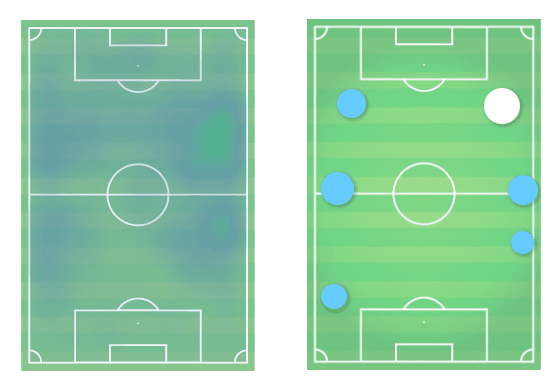
Technical Aspects
An aspect of Patrick Wimmer that stands out instantly when watching him is his variation in how he receives the ball and finds solutions when contested by opposition defenders. As mentioned before, the young winger has featured on both flanks, whether in attack at Arminia Bielefeld or defence for Austria Wien, demonstrating how comfortable he is in both zones. This largely comes down to Wimmer being very efficient on both feet. When out wide against a defender, Wimmer can showcase his variety, as he can cut inside or dribble to the byline. In addition, Wimmer is a technical dribbler, as he can move at speed while keeping the ball close to his feet and manipulating it to bypass defenders. So far this season, Wimmer has accumulated 2.96 dribbles per 90 (93 percentile across the top five leagues). Also, he knocks the ball around the opposition defender, but with that in mind, this move can be slightly hit-or-miss, as he may slightly overhit the ball.
Another example of Patrick Wimmer showcasing his vast technical arsenal can be viewed in the way he receives the ball and in his understanding of space. The Arminia attacker is fluid with his movements and uses this to his advantage as he constantly looks to change the picture and direction of the attack. He can do this by constantly scanning the surrounding space when not in possession of the ball. When the ball is finally played to his feet in the final third, he uses his first touch to great effect, quickly gaining an advantage against the opposition defender. While making use of his first touch, Wimmer does well to allow the ball to roll across his body into space on either side of him before marching forward with the ball.
Here, Wimmer is in possession and faces pressure from Borussia Mönchengladbach midfielder Kouadio Koné. As he takes his first touch, he is quite aware of his teammate in front of him making a forward run.
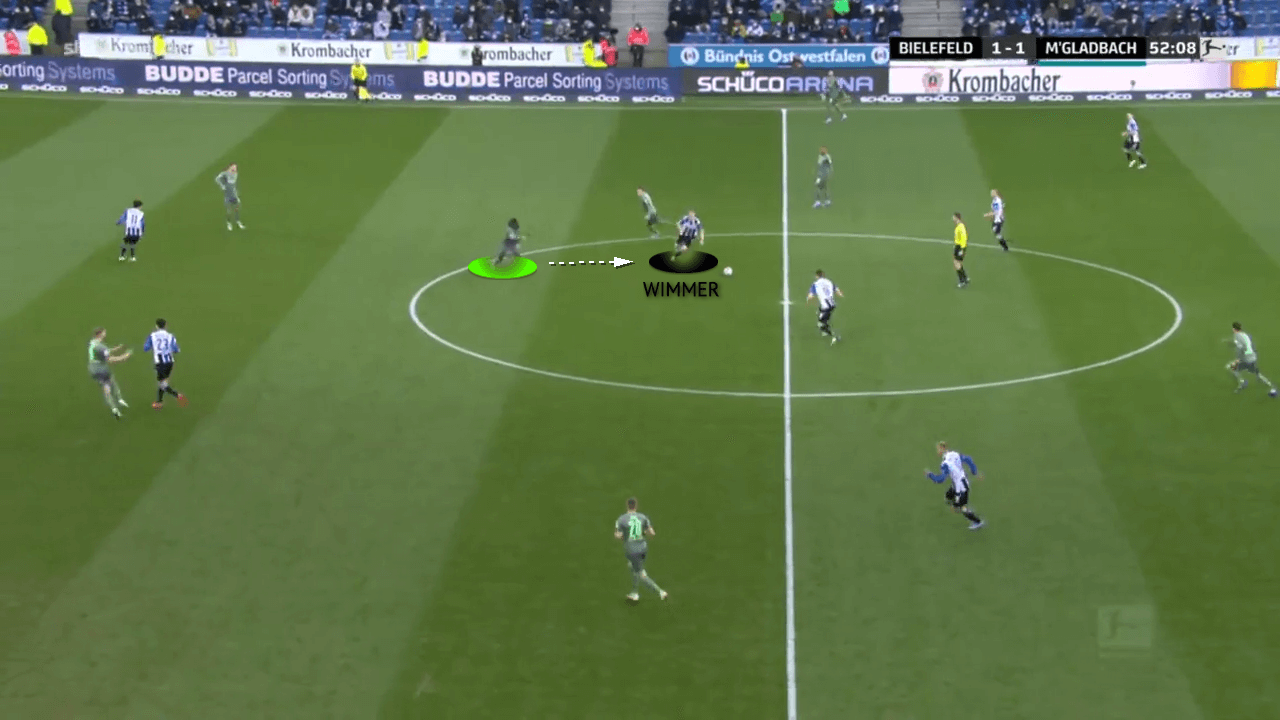
Wimmer uses this movement from his teammates to his advantage. Kouadio Koné notices this movement and takes a slight step back just in case to track. Wimmer spins around into the open space and fires a nicely weighted pass to a teammate further forward.
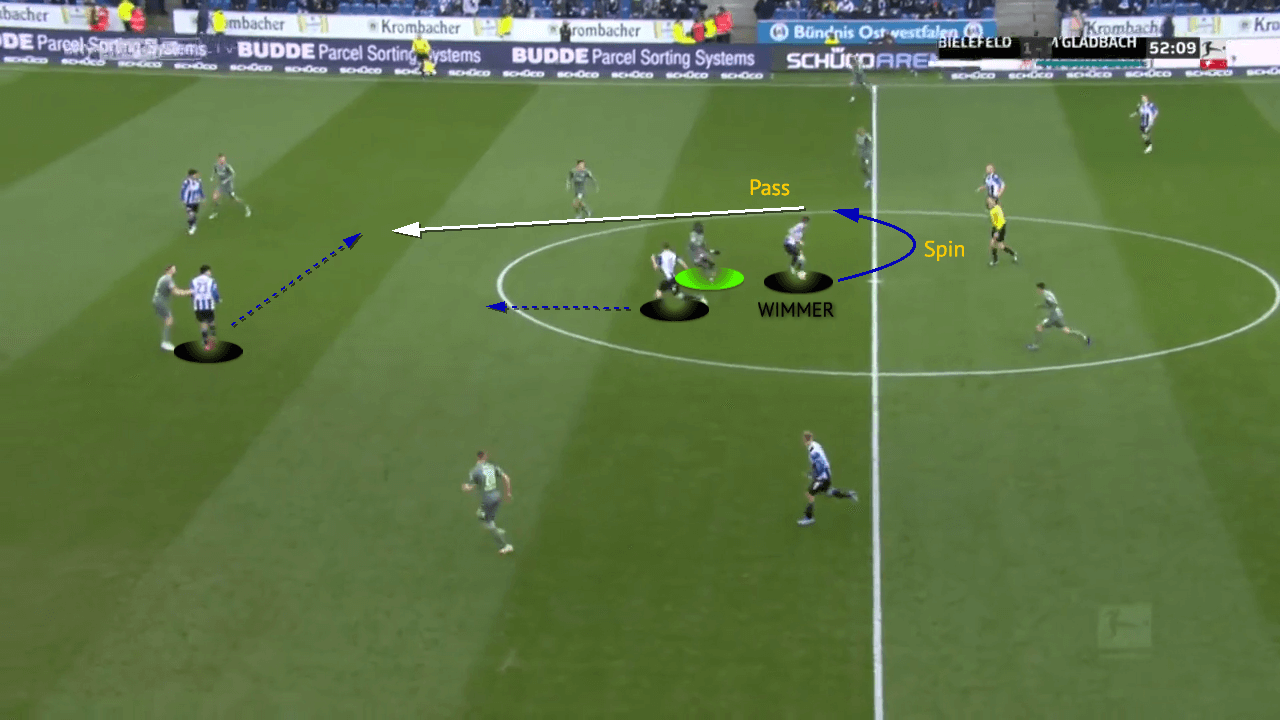
Creativity & Offensive Value
When exploring and evaluating Patrick Wimmer’s creativity and the value he adds to an attack, whether referencing data and on-pitch action through the eye test, we must remember the type of team Arminia Bielefeld are. The stats show Arminia currently gets the lowest possession percentage per 90, along with the least amount of passing in the Bundesliga. While this is the case, Patrick Wimmer still performs reasonably well on the stats sheet. On a per 90 basis, Wimmer has racked up 0.19 xA (63 percentile), together with 4.08 shot-creating actions, which may occur from live and dead-ball situations. During open play, a large majority of Wimmer’s shot creation happen off the dribble and upon observation, Wimmer is not much of a crosser during open play, as he prefers to take on opponents and create shooting or passing opportunities through different avenues; the data will also support this assessment, as he completes 1.18 crosses per 90 minutes, which equates to an 18 percentile across Europe. This is not to say that Wimmer cannot perform crosses when needed; his assist against VfL Bochum would prove otherwise.
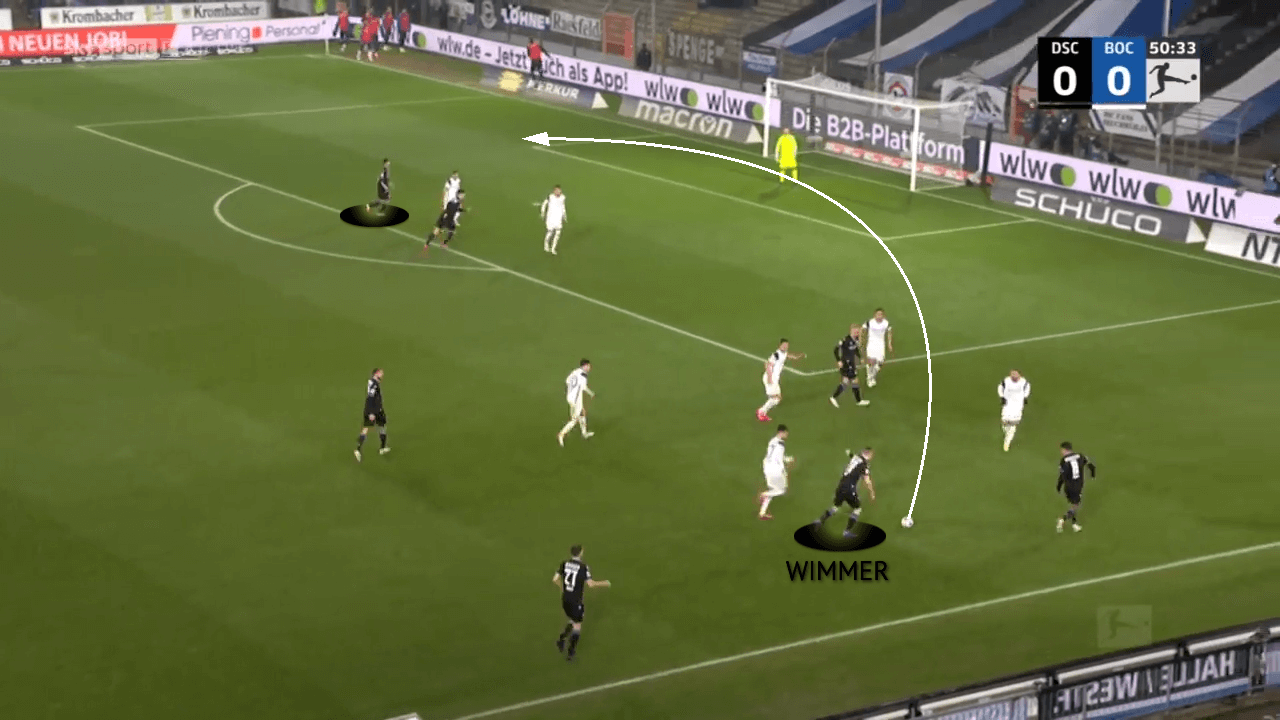
From time to time, Wimmer likes to station himself slightly inside and occupy central zones. When he takes up these kinds of positions, we can have a better understanding of how he executes his passes. Patrick Wimmer likes to thread the ball through the lines when in the attacking third; an issue he suffers from is the incorrect contact he gets with the ball, resulting in overhit passing and missed possibilities.
Patrick Wimmer’s shot profile is quite interesting when remembering he is only 20 years of age. This season, the Austrian winger has amassed 3.20 shots per 90, (93 percentile), which is on the level of strikers across the continent. Like his shot-creating actions in open play, a large number of Wimmer’s shots take place after a dribbling action, as he likes to slalom through and find a gap. While Wimmer can create a shot off his own accord, he also uses his teammates to his advantage, as he excels during a one-two passing exchange before pulling the trigger. This skill is also accompanied by his off-ball movement, as he does well to attack open spaces, down the centre or at the back post.
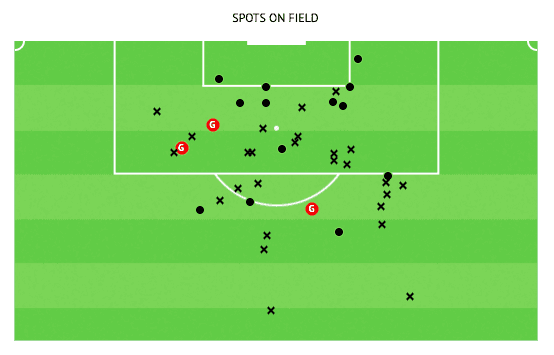
Patrick Wimmer is a multi-faceted player within the attacking department, as he is lightning quick, which is useful during counter-attacking sequences. Mix this in with his ability to dribble in multiple directions. Besides his clinical off-ball movement and live/dead ball shot creation, Arminia has a good dual-threat attacking prospect on their hands. It is still early days for the wide-forward as this is his first season in a top-five league, but through data evaluation and on-pitch performances, Patrick Wimmer does profile in the same mould as a young Rahphina at Ligue 1 club Rennes before joining Premier League club Leeds, as he achieved 0.56 npxG+xA compared to Wimmer’s 0.46 this season.
Weaknesses
For all of Patrick Wimmer’s strengths, he is still a young player and suffers from some slight deficiencies and shortcomings, starting with his first touch and tempo on the ball. When performing certain actions, Wimmer performed in a rushed fashion, leading to a poor first touch of the ball. His first touch can also be quite loose when running while in possession; the ball can get caught up in his feet or slightly deviate away from him. Regarding the tempo, Wimmer shows glimpses of being a player that is maturing in terms of understanding the game state, which aids decision-making. This was seen during his performance against Bayern Munich away from home. He displayed great ball retention skills to relieve pressure and made simple yet effective passes. In some matches, he tries too hard and needs to understand the art of when to slow down and when to speed up.
For example, in this situation, Wimmer does well to place his shoulder into the back of the opposition defender and win the high ball.
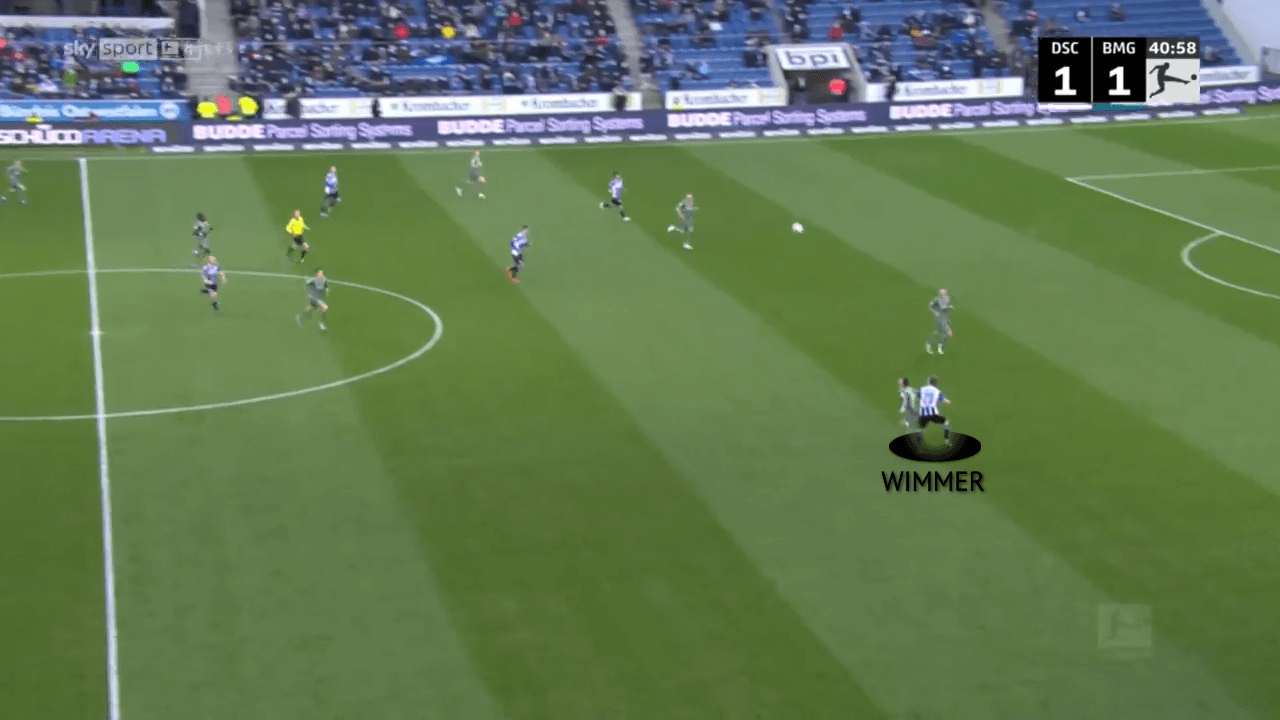
Now he is in possession, he attempts to dribble the ball between the two defenders, but the more sensible play here would be to make a simple pass in the centre to his teammate.

Conclusion
The path to the top is not always clear, and every player’s journey is different. Some players may begin at the top and stay there for the rest of their career. Other players must take opportunities that may not be as heavily viewed by the public, as is the case for Patrick Wimmer of Arminia Bielefeld, who is currently going through a relegation battle in the Bundesliga.
Nevertheless, Wimmer is still giving an excellent account of himself with limited touches of the ball. Wimmer has a wonderful combination of skills — he can drive with the ball inside and outside, has spatial awareness, and can create for others. In conjunction, he is building a good shot portfolio, as quite a few of them are happening in and around the box. For all his strengths, the young attacker has weaknesses. His first touch can be quite loose and rushes a few actions. These types of issues are completely normal for an inexperienced player and are all a part of his development. Soon enough, Patrick Wimmer shall surely blossom and has the potential to take the footballing world by storm when he does.

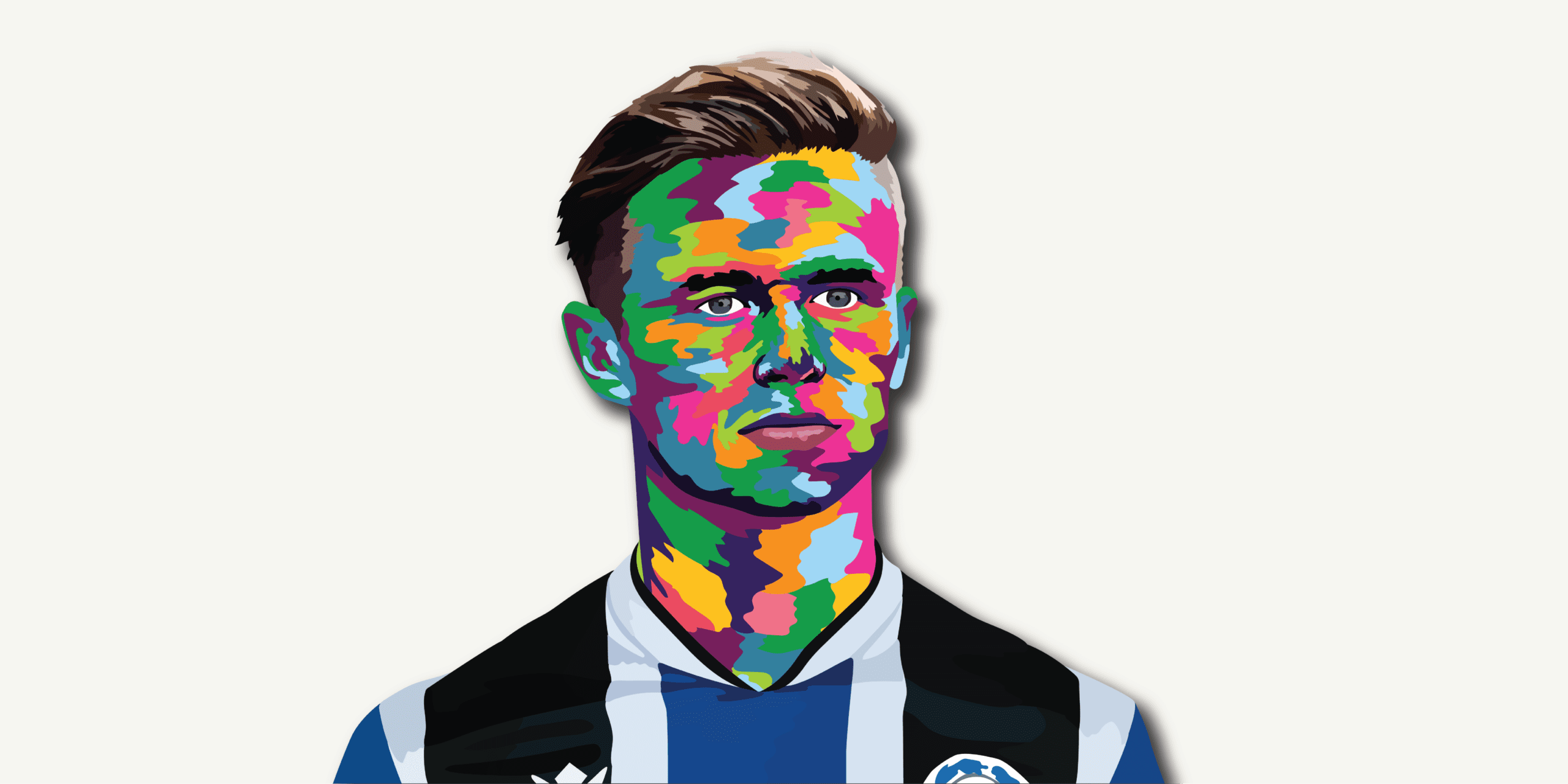




Comments